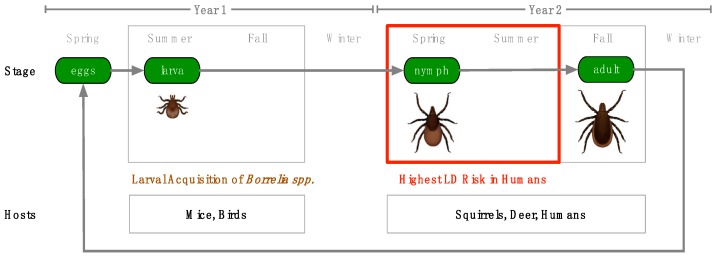Figure 1.
Tick Lifecycle and Host Interaction—The Ixodes scapularis tick lifecycle takes two years and requires three blood meals, one at the larval stage, one at the nymphal stage and one at the adult stage of development. Smaller mammals and birds serve as hosts for blood meals at the larval stage, while larger mammals are hosts during the nymphal and adult stages. Larvae which acquire Borrelia spp. from mice and birds in the summer of their first year can transmit these spirochetes as nymphs in the spring of their second year, infecting humans. For this reason, Lyme disease (LD) risk is highest in the spring and summer.

